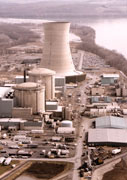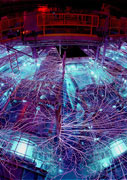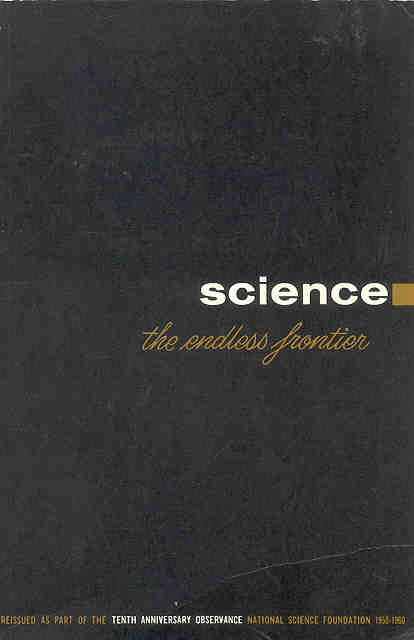Program on Science, Technology and Society at HarvardHarvard Kennedy School of Government | Harvard University |
||||||||
|
|

ResourcesThis section offers a guide to the types of primary resources that are likely to prove useful in analyzing sociotechnical imaginaries. This compilation is meant to be exemplary rather than encyclopedic. Contents:
WESTERN IMAGINATIONSScience and technology have long figured in the self-imaginations of Western powers and their political leaders, though not always explicitly so. This collection of resources provides key examples of moments in which science and technology play a constitutive role in Western visions of the power and responsibilities of the sovereign state. With remarkable constancy, though with different inflections, such official texts connect appeals to science and technology with “negative imaginaries” of crisis, paralysis, and failure, or falling behind, in competition with other nations. Science and technology thus become ways of staving off, preventing, or overcoming perceived social stagnation or degradation, promising futures that will be better than any experienced present or past. Vannevar Bush. July 1945. Science, the Endless Frontier. United States Government Printing Office, Washington. Full text available here. At the end of World War II, the Director of the Office of Scientific Research and Development, Vannevar Bush, outlined the need for a permanent governmental institution for fostering scientific research in the United States. This report helped placed federally supported basic research at the center of the postwar American imaginary of national power, progress and the public good. Famously, Bush espoused a program of public science that would be politically independent of the federal government, setting its own agendas and relying on the state only for a steady stream of resources. Thus, Bush’s programmatic imagination of science and the state incorporated the notion that science must sit outside of politics. 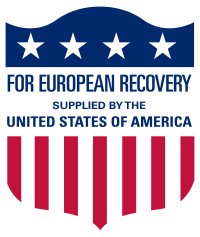
George C. Marshall. 5 June 1947. Marshall Plan Speech. Harvard University. Full text available here. Two years after the end of World War II, European economies were still in ruins. Marshall delivered a commencement speech at Harvard University in which he outlined the bare bones of a plan for the United States to help rebuild Europe. Much of his speech focused on the devastating losses to technology, infrastructure, and industry that would breed misery and political unrest. The Marshall Plan is a fascinating site to study the emerging imaginary of the “free world”, interweaving of visions of reconstructing democracy with reconstructing markets. “Our policy is directed not against any country or doctrine but against hunger, poverty, desperation and chaos. Its purpose should be the revival of a working economy in the world so as to permit the emergence of political and social conditions in which free institutions can exist.”
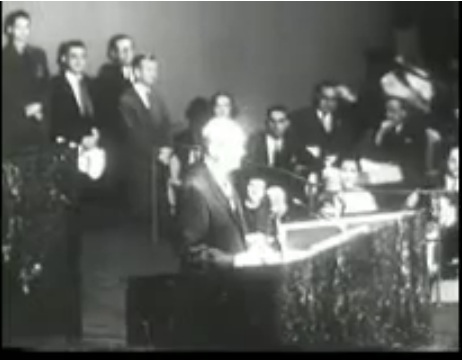
Dwight D. Eisenhower. 8 December 1953. Atoms for Peace. Address to the 470th Plenary Meeting of the United Nations General Assembly. Full text available here. In the years following the bombing of Hiroshima and Nagasaki, when the dreadful toll of radiation on human lives was becoming apparent, American statecraft attempted to project a more positive imaginary of nuclear energy. Eisenhower’s speech in effect split the atom a second time (Jasanoff and Kim 2009), displaying a vision of nuclear power for peaceful purposes, offsetting the atom’s role as an instrument of mass destruction. John F. Kennedy. 25 May 1961. Special Message to the Congress on Urgent National Needs. Full text, audio, and video available here. John F. Kennedy. 12 Sept 1962. We choose to go to the moon speech. Rice University. Full text and audio available here. With the launch of the USSR’s Sputnik fresh in the American mind, Kennedy announced the far-reaching goal of “landing a man on the moon and returning him safely to earth” before the decade’s end. Framed as a Cold War struggle between freedom and tyranny for the global South, this speech and the one at Rice University reinforced the imagination of “American exceptionalism”, a pioneering nation needing to gain mastery of space as a means to deter Soviet aggression, to inspire other nations, to unite Americans in a common project, and “because it is there.” These speeches project not only a technological goal but specific imaginations of the American nation and its place in the world. 
European Union. 2000. Lisbon Agenda. Full text available here. In the Lisbon Agenda, the European Union set forth a vision of how to “become the most competitive and dynamic knowledge-based economy in the world” through innovation and learning. The effort was, in part, a response to the changing face of production in the world. The first line of the report reads, “The European Union is confronted with a quantum shift resulting from globalisation and the challenges of a new knowledge-driven economy.” The Lisbon Agenda highlighted the role that science, technology, and other forms of knowledge-production would play in the transition to a more vibrant economic future. For a critique of the Lisbon’s imaginary of innovation and the public good, see Taking European Knowledge Society Seriously (2007), referenced on this site. 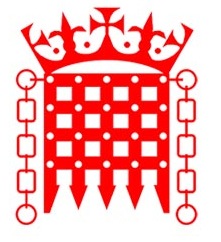
UK House of Lords. 2000. Science and Technology—Third Report. Full text available here. In the late 1990s, the BSE or “mad cow” scare called Britain’s traditionally closed and top-down modes of expert consultation into question. The House of Lords, advised by noted STS scholars, acknowledged in this report that relations between science and society were in a “crisis of trust” and fundamental changes were needed to restore public confidence. Rejecting the “deficit model” that imagines publics as insufficiently knowledgeable, the report projected a more democratic imaginary in which public engagement could legitimately question and help define the purposes of science. 
US National Academy of Sciences. 2007. Rising Above the Gathering Storm. Full text available here. The imagination of globalism as a competitive field permeates this NAS report, with the further touch that the United States is seen as seriously in decline. The report shows the US to be lagging or behind in several key indicators of scientific and technological advancement that are also seen as indicators of the nation’s success. A looming crisis for the nation is depicted at the same time as a crisis for science and technology, showing how the destinies of America and of American science and technology have come to be seen by the leading scientists and engineers who authored the report as indissolubly linked. 
US National Academy of Sciences. 2009. A New Biology for the 21st Century. Full text available here. The report sees the “coming biology revolution” as holding “tremendous promise for surmounting many of the major challenges confronting the United States and the world.” The life sciences are imagined as offering a comprehensive, integrative approach to solving four of society’s most intransigent problems: food, energy, environment, and health. An optimistic and upbeat look at a perceived scientific revolution is remarkable for its lack of reference to any corresponding need to envision or address the new biology’s social context. 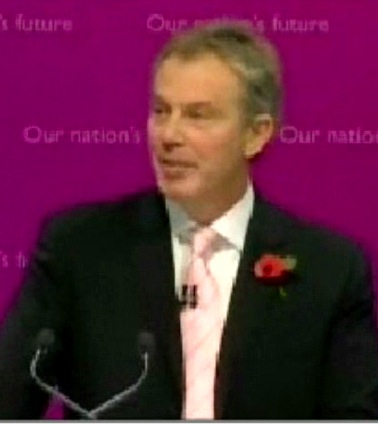
Tony Blair. 23 May 2002. Speech to the Royal Society on British Science. Full text available here. In this speech, British Prime Minister Tony Blair announced a “new age of discovery.” In response to the perceived threat, or “negative imaginary,” that developing nations would outcompete Europe in new scientific discoveries and technical innovations, Blair imagines a reinvigorated world of British science that recalls the very founding of the Royal Society in 1660, the birth of England’s scientific preeminence. The speech is notable for the nuanced way in which Blair advocates a rapprochement between science and society while reiterating the persistent imaginary of scientific autonomy. “The fundamental distinction is between a process where science tells us the facts and we make a judgement; and a process where a priori judgements effectively constrain scientific research.”
Tony Blair. 3 November 2006. Our Nation’s Future: Science. Royal Society, Oxford. Full text available here. Video available here. In a speech that was part of his “long farewell” to the nation, Blair again reiterated key elements of the imaginary of a Britain “lit by the brilliant light of science.” Politics, he indicated, was “insufficient” to solve problems without science. He reiterated the theme of Britain’s incapacity “to turn its technological and scientific creativity to economic purpose.” Yet in a curious echo of Bernal, Blair identified science with norms-making on a grand scale: “The science of climate change is the moon landing of our day. This is idealism in a technical language.” Barack Obama. 20 January 2009. Inaugural Address. Full text available here. Barack Obama rode to the US presidency on a platform of “hope” and “change.” Among the problems he inherited from his predecessor was the perception that the White House had abandoned science. In his much-anticipated inaugural address, Obama began to rearticulate the imaginary of the United States as a nation built by science and technology, promising to “restore science to its rightful place” and “wield technology’s wonders” to improve healthcare and the environment and to foster economic growth. “We will build the roads and bridges, the electric grids and digital lines that feed our commerce and bind us together. We’ll restore science to its rightful place, and wield technology’s wonders to raise health care’s quality and lower its cost. We will harness the sun and the winds and the soil to fuel our cars and run our factories.”
For a comment on science’s “rightful place”, see S. Jasanoff, “The Essential Parallel Between Science and Democracy.” Seed, February 17, 2009. Barack Obama. 27 April 2009. Remarks by the President at the National Academy of Sciences Annual Meeting. Full text available here. In this speech, delivered soon after taking office as 44th President of the United States, Obama laid out interwoven elements of American exceptionalism and his own campaign rhetoric, stressing science’s role in experimentation, opening frontiers, building useful things, and nurturing hope. “The very founding of this institution stands as a testament to the restless curiosity, the boundless hope so essential not just to the scientific enterprise, but to this experiment we call America.”
Barack Obama. 25 January 2011. State of the Union Address. Full text available here. Delivered in a context of continuing economic crisis, the speech again highlights the links between science, technology, and America’s special role in a highly competitive world. Invocations of the national past in building the nation’s future are especially noteworthy. IMAGINED PUBLICSHow have states imagined their publics in relation to science and technology? Three influential approaches to this topic are the work on the public understanding of science, risk communication, and behavioral economics. The first two have generated a significant amount of STS commentary. Public Understanding of Science (PUS)The notion of “public understanding of science” traces to a line of empirical social science research that began in the early 1970s. Initially these efforts sought to measure public attitudes towards science and technology; later they focused increasingly on public grasp of specific scientific knowledge, as well as scientific method. These efforts have been motivated by the notion that “public understanding of science” is indicative of public support for science and technology, and in particular, of state support for science. In a sense, public understanding of science research was an effort to assess the credibility of an imaginary that gave science in a central role in the operations of the democratic state. This line of research, and the preoccupations it represents, reveals the extent to which this imagination of science was simultaneously an imagination of the kinds of citizens needed to sustain such a regime. The public understanding of science, by these metrics, is deeply deficient. In this respect, it reflects a perpetual anxiety about the fragility of the social contract with science, and the need for reformation of the polity to better understand (and thereby appreciate and commit to) science and technology as central to the public good. Key references include: 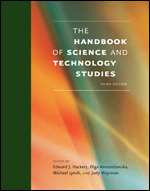
Brian Wynne, “Public Understanding of Science,” in Handbook of Science and Technology Studies, edited by Sheila Jasanoff, Gerald E. Markle, James C. Petersen, and Trevor Pinch (London: Sage, 1995), 361-388. 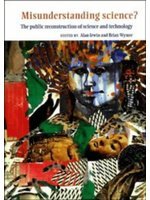
Alan Irwin and Brian Wynne, eds. 1996. Misunderstanding Science? The Public Reconstruction of Science and Technology. Cambridge. Risk CommunicationRelated to the public understanding of science, Risk Communication is a field of policy practice that begins from the belief that people—through ignorance or some other defect—often “irrationally” misconstrue the relative likelihood of risks or hazards. For instance, famously, people more often fear flying in planes than riding in cars, even though they are much more likely to die in car accidents. Risk communication thus seeks to clarify the probability of hazards and to explain relative degrees of harm in such a way that people will act in accordance with “actual” rather than “perceived” risks. Through second order reflection, specialists in risk communication often consider people’s responses to communications, hoping to avoid panic and other irrational responses. In the context of sociotechnical imaginaries, risk communication operates as a powerful, but culturally specific, policy framework that both imagines its publics and seeks to manage public imaginations so as to align them well with those of experts. Behavioral Economics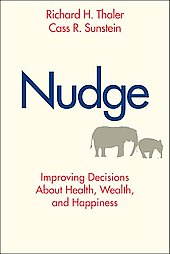
Cass R. Sunstein and Richard H. Thaler. 2008. Nudge. Yale University Press. The imagination of the rational actor in classical economics has been modified by recent work in behavioral economics. Drawing together classical economic theory with cognitive science and behavioral psychology, behavioral economics is constructing an increasingly refined image of the less-than-rational actor who has specific deficiencies in rational decision-making that can be experimentally characterized and anticipated. These ideas have proven remarkably compelling to policymakers and publics. Though they primarily purport to offer a characterization of human reason, they simultaneously offer a vision of governance in which faulty predispositions are anticipated and corrected for by technocratic management of the circumstances of choice. Thus this imagination of the cognitive constraints of the liberal subject is simultaneously an imagination of the role (and forms) of governance that can produce the right form of rational public and thereby generate a well-ordered society. This bestselling work by an economist and legal scholar offers an example of this emerging imaginary. POSTCOLONIAL IMAGINATIONSScience and technology featured prominently in the thought and actions of post-colonial leaders who sought to articulate and project imaginaries of national sovereignty and self-determination in the aftermath of colonial rule. Below are links to exemplary texts that represent visions of independence sustained by commitments to the development of scientific and technological capacity. 
Jawaharlal Nehru. 1947. Speech on the Granting of Indian Independence (also known as the “Tryst with Destiny” speech), August 14. Full text available here. In one of the greatest speeches of the postcolonial era, Nehru, the first Prime Minister of independent India, did not specifically refer to science and technology, but the text is full of references to the need to build the nation anew, and it powerfully imagines a future in which inequality, poverty, and ignorance will end.[/indent]
Jawaharlal Nehru. 1955. Speech to Bandung Conference Political Committee. Text excerpt available here. The speech is notable for imagining a role for the assembled Asian and African nations (in effect, the Third World) between the two colossi of the United States and the Soviet Union and for its advocacy of a moral force opposed to the military forces of the superpowers. 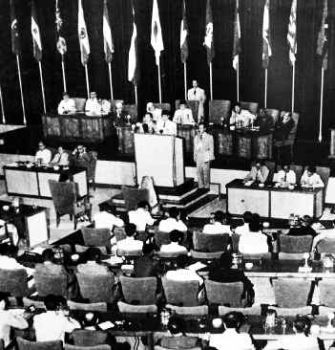
Final Communiqué of the Asian-African conference of Bandung, 24 April 1955. Full text available here. This text resulting from the Bandung Conference presents a vision of multifaceted cooperation among the participating non-aligned nations, including technical assistance as described in its second paragraph on economic cooperation: “The participating countries agreed to provide technical assistance to one another, to the maximum extent practicable, in the form of: experts, trainees, pilot projects and equipment for demonstration purposes; exchange of know-how and establishment of national, and where possible, regional training and research institutes for imparting technical knowledge and skills in cooperation with the existing international agencies.”
GLOBAL & INTERNATIONAL IMAGINATIONS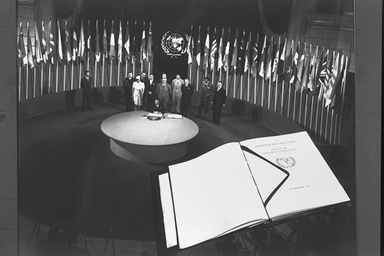
Charter of the United Nations. 26 June 1945. San Francisco. Full text available here. Following the end of World War II, the United Nations resurrected the vision of a world government, with nation states representing the peoples of the world, and dedicated to preserving peace and advancing equality and justice for all. Article I states that it is a purpose of the UN “to achieve international co-operation in solving international problems of an economic, social, cultural, or humanitarian character.” Over time the UN came to include specialized agencies using scientific, technical, and medical knowledge to address problems of food, agriculture, health, economics and development, and, eventually, climate change. These agencies propagate their own sociotechnical imaginaries linking forms of political and administrative power with visions of progress for humanity. 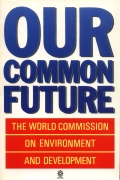
World Commission on Environment and Development. 1987. Our Common Future. Oxford. Full text available here. Also known as the Brundtland Report, this text—assembled in preparation for the 1992 Rio “Earth Summit”—continued the project of imagining the environment as a shared resource of humankind. By coupling environment with development, it sought to overcome perceived contradictions between global economic and environmental objectives, thereby drawing the developing world into the conversation. It introduced the concept of “sustainable development,” defined as “development that meets the needs of the present without compromising the ability of future generations to meet their own needs.” The notion of sustainability worked its way into scientific, economic, and political discourse, greatly (if not consistently) expanding the imagined temporal horizon of human enterprise in all these domains. 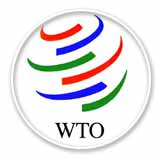
World Trade Organization. Agreement on Trade-Related Aspects of Intellectual Property Rights (TRIPS Agreement). 14 November, 2001. Doha, Qatar. Full text available here. The TRIPS Agreement incorporates an internationally agreed understanding of intellectual property rights into the WTO’s already extant imaginary of free trade. In the face of intensifying globalization, knowledge transfer, and concern about “intellectual property piracy,” the agreement mandates that any nation wishing to be part of the WTO must adopt and enforce intellectual property (IP) laws. The agreement requires signatories to recognize that IP rights are private rights, but it acknowledges that public policy objectives, such as “developmental and technological objectives” may affect IP laws and that members may “adopt measures necessary to protect public health and nutrition, and to promote the public interest in sectors of vital importance to their socio-economic and technological development.” Special provision is made for any member “in the process of transformation from a centrally-planned into a market, free-enterprise economy and which is undertaking structural reform of its intellectual property system.” 
World Bank. Articles of Agreement. 27 December 1945 (Effectuation). Full text available here. Another product of attempts to imagine a peaceful world order following the destruction of World War II, the World Bank was established with a self-described mission “to fight poverty with passion and professionalism for lasting results and to help people help themselves and their environment by providing resources, sharing knowledge, building capacity and forging partnerships in the public and private sectors.” Key elements of this mission, such as the Bank’s commitment to a particular vision of capacity building, have been widely critiqued in the social science literature. See, e.g., Michael Goldman, Imperial Nature: The World Bank and Struggles for Social Justice in the Age of Globalization (Yale 2006). In 1989, the Bank’s imaginary of governance broadened to include Post-Soviet States and aiding the transition to capitalist economies. NON-STATE ACTORS AND IMAGINATIONSNon-state actors communicate their imaginations of the future through forms of expression that are more often symbolic, performative, and visual than purely textual. The Internet has become a powerful ally in such modes of self-expression, offering vastly different rules of access and norms of rhetoric and evidence than the structured fora of traditional politics. To be sure, the Web also provides an added medium through which states and elites can disseminate their ideologies and visions, but to different audiences and with less certainty of uptake. This section displays examples of contemporary sociotechnical imaginaries on the Web, drawing attention to the importance of this new communicative resource in constructing the spaces of imagination. Corporate Imaginations
General Electric These clips from the General Electric “ecomagination” advertising campaign illustrate how the themes of globalization, innovation, public benefit, and imagination itself were incorporated into an implicit discourse of neoliberalism, which casts corporations as best able to deliver effectively and immediately on imagination’s promises. •GE Ecomagination •GE Imagination at Work video Apple No company has been more closely associated than Apple at the turn of the 21st century with themes that are central to America’s imaginative repertoire: individual entrepreneurship, leadership through innovation, national regeneration through technology, and American creative supremacy. The two clips below—Apple’s 1984 launch ad and a mash-up of it produced during Barack Obama’s 2008 election campaign—illustrate the power of a company’s self-imagination to circulate through the national imagination, morphing from advertisement to political commentary as an interpretively mutable mobile. |
|||||||

